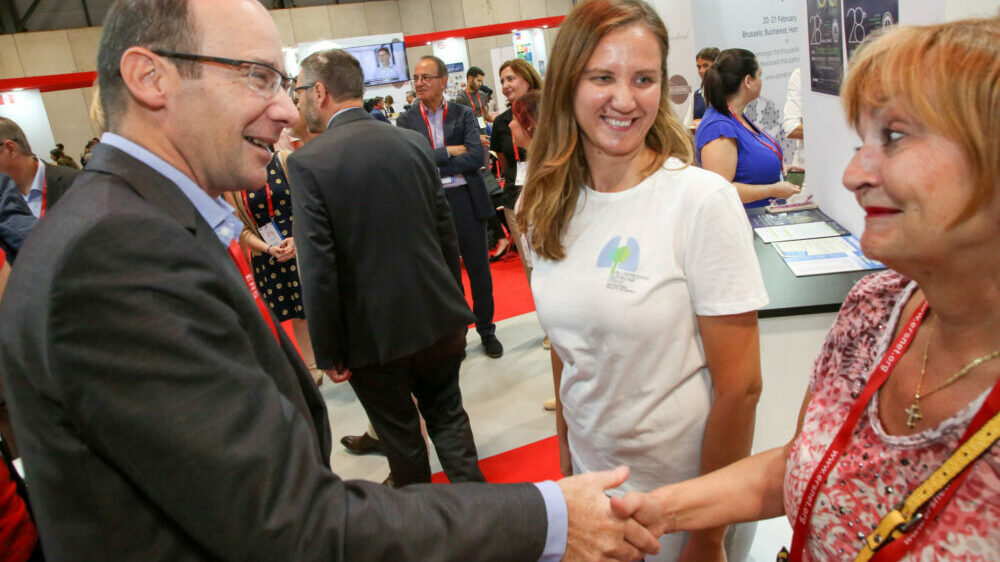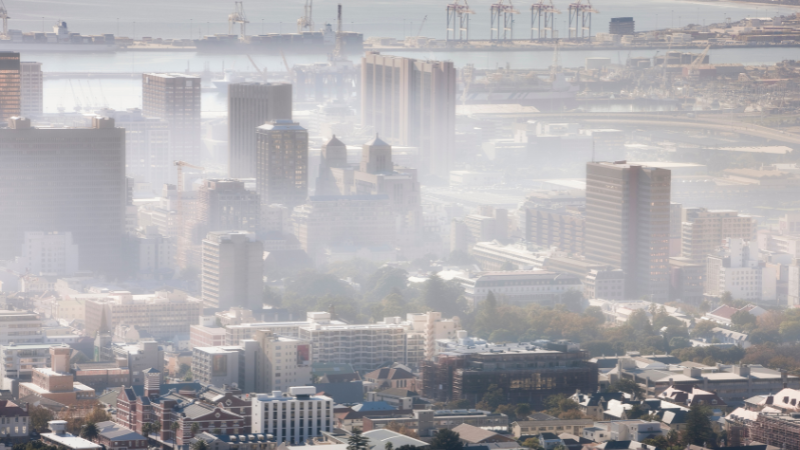
Embargo: 00.01 hrs CEST on Sunday, 8 September, 2024
Vienna, Austria:
Long-term exposure to air pollution and a lack of green space increases the risk of hospitalisation for respiratory conditions
Increased exposure to traffic-related air pollution is also clearly linked to asthmatic patients developing COPD
Long-term exposure to air pollution and a lack of access to green spaces increases the risk of hospitalisation for respiratory conditions, according to a study presented at the European Respiratory Society (ERS) Congress in Vienna, Austria [1].
Traffic-related air pollution is also strongly linked to the progression from asthma to asthma-COPD, according to a second study also presented at the ERS Congress [2].
Previous research has linked air pollution to an increase in respiratory conditions such as asthma and chronic obstructive pulmonary disease (COPD), and access to parks and gardens to a decrease; however, less is known about the long-term effects of air pollution on respiratory hospitalisations, and whether air pollution makes people who already have asthma more likely to develop COPD.
The first study, the results of the Life-GAP project, were presented by Ms Shanshan Xu from the Department of Global Public Health and Primary Care, University of Bergen, Norway.
Her team used the results of northern European study centres from the European Community Respiratory Health Survey which covered respiratory hospitalisations from 2000 to 2010. The study looked at 1644 people from five countries. They evaluated the association between respiratory health and long-term exposure (between 1990 and 2000) to particulate matter, black carbon, nitrogen dioxide, ozone, and greenness (the amount and health of vegetation surrounding a person’s home).
Although Northern Europe has relatively low air pollution levels, they found that particulate matter, black carbon, and nitrogen dioxide increased the risk of being hospitalised for respiratory diseases in this population.
Ms Xu explained: “Specifically, we observed that for each interquartile range increase in these pollutants, the risk of hospitalisation rises by approximately 30 to 45 per cent, depending on the pollutant. Greenness, on the other hand, contributed to a reduced risk of respiratory hospitalisation.”
But while greenness was associated with a decreased risk of respiratory hospitalisations, it was also linked to an increased number of respiratory emergency room visits, particularly when looking at the co-presence of hay fever.
Ms Xu added: “Air pollution causes persistent inflammation and oxidative stress in the respiratory system. These harmful processes contribute to the development and exacerbation of chronic respiratory diseases, which can escalate into severe health episodes requiring hospital care. It is also likely that long-term exposure to air pollution could lead to a decreased tolerance or increased sensitivity to these pollutants, explaining why even moderate or low levels might cause severe health effects in certain populations.”
The second study was presented by Dr Samuel Cai from the Centre for Environmental Health and Sustainability at the University of Leicester, UK.
Dr Cai explains: “We found that for every 10 micrograms per metre cubed higher exposure to particulate matter, the risk of developing COPD was 56 per cent higher among asthmatic patients; we also found that higher exposure to nitrogen dioxide increases the risk. In addition, if individuals carry a medium-to-high genetic risk score, the risk of increased nitrogen dioxide exposure causing asthma to progress to COPD is even higher.”
Dr Cai adds: “People with asthma should always be aware of air pollution around them and, if necessary and resources allow, take measures such as wearing masks, use an indoor air purifier and reducing outdoor activities when air pollution is at high levels.”
Zorana J Andersen is Chair of the ERS Health and Environment Committee, and Professor of Environmental Epidemiology at the Department of Public Health, University of Copenhagen, Denmark, and was not involved in the research. She said: “These findings emphasise the critical impact of long-term exposure to air pollution on respiratory health and highlight the need for effective clean air initiatives and regulations.
“Air pollution affects everybody, but most people are very limited in the actions they can take against it to protect their health. It falls to policy-makers to come up with some bold actions to tackle air pollution in our cities and help everyone, including those with asthma. This includes initiatives to reduce pollution and promote urban greenery, as well as thoughtful urban planning that avoids planting allergenic vegetation.
“We also need to find ways not only to prevent the onset of asthma, but to prevent it from developing into a multi-disease state in the long-term, as this presents a great burden not only on patients, but also on the healthcare system.”
[1] View the full abstract content (p/w:3R524SHANSHAN)
Notes to editors
Graphs of results from the Life-GAP study are available on request.
Further findings from the Life-GAP study have been made after abstract submission. A copy of the updated presentation is available on request.
The Life-GAP project (Lifespan and inter-generational respiratory effects of exposures to greenness and air pollution) studies how air pollution affects respiratory health over time and across generations, with particular focus on low exposure levels. It includes data from five countries: Iceland, Norway, Sweden, Denmark and Estonia.
[https://www.uib.no/en/rg/gap/148378/life-gap-project]
[1] Abstract no: PA468 “Long-term exposure to air pollution and greenness and hospitalization for respiratory conditions in Northern Europe: The Life-GAP project”, by Shanshan Xu et al; Presented in session “Environmental and occupational determinants of respiratory health outcomes” at 08.00-09.30 CEST on Sunday 8 September 2024. [https://k4.ersnet.org/prod/v2/Front/Program/Session?e=549&session=17740]
Please acknowledge the European Respiratory Society Congress as a source in any articles:
[1] Abstract no: PA468 “Long-term exposure to air pollution and greenness and hospitalization for respiratory conditions in Northern Europe: The Life-GAP project”, by Shanshan Xu et al; Presented in session “Environmental and occupational determinants of respiratory health outcomes” at 08.00-09.30 CEST on Sunday 8 September 2024. [https://k4.ersnet.org/prod/v2/Front/Program/Session?e=549&session=17740]
Funding: Research Council of Norway (Grant No. 300765)
According to the UK Academy of Medical Science’s press release labelling system, this is a non-peer reviewed observational study in people.
[2] Abstract no: OA971 “Air pollution, genetic susceptibility and risk of progression from asthma to COPD”, by Samuel (Yutong) Cai et al; Presented in session “Lifetime impact of environmental and occupational exposures on respiratory health” at 09.30-10.45 CEST on Sunday 8 September 2024. [https://k4.ersnet.org/prod/v2/Front/Program/Session?e=549&session=17894]
Funding: NIHR Leicester Biomedical Research Centre
According to the UK Academy of Medical Science’s press release labelling system, this is a non-peer reviewed observational study in people.
Note: When obtaining outside comment, journalists are requested to ensure that their contacts are aware of the embargo on this release.
The European Respiratory Society (ERS) Congress is a once-a-year occasion when the world’s respiratory experts come together to present and discuss the latest research in respiratory medicine, including topics such as asthma, COPD, lung cancer, pollution, smoking and vaping. The Congress welcomes thousands of participants from all over the world each year, facilitating the exchange of scientific and clinical excellence across the entire field of respiratory medicine. The reputation of ERS derives from the outstanding scientific programme of its Congress, which this year is available to in-person and online participants: www.ersnet.org/congress
Further information:
Sian Halkyard
Mobile: +44 (0) 7970 096 175
Email: sianhalkyard@gmail.com
Kerry Noble
Mobile: +44 (0) 7446 869 433
Email: kerry@ricemasonnoble.eu













